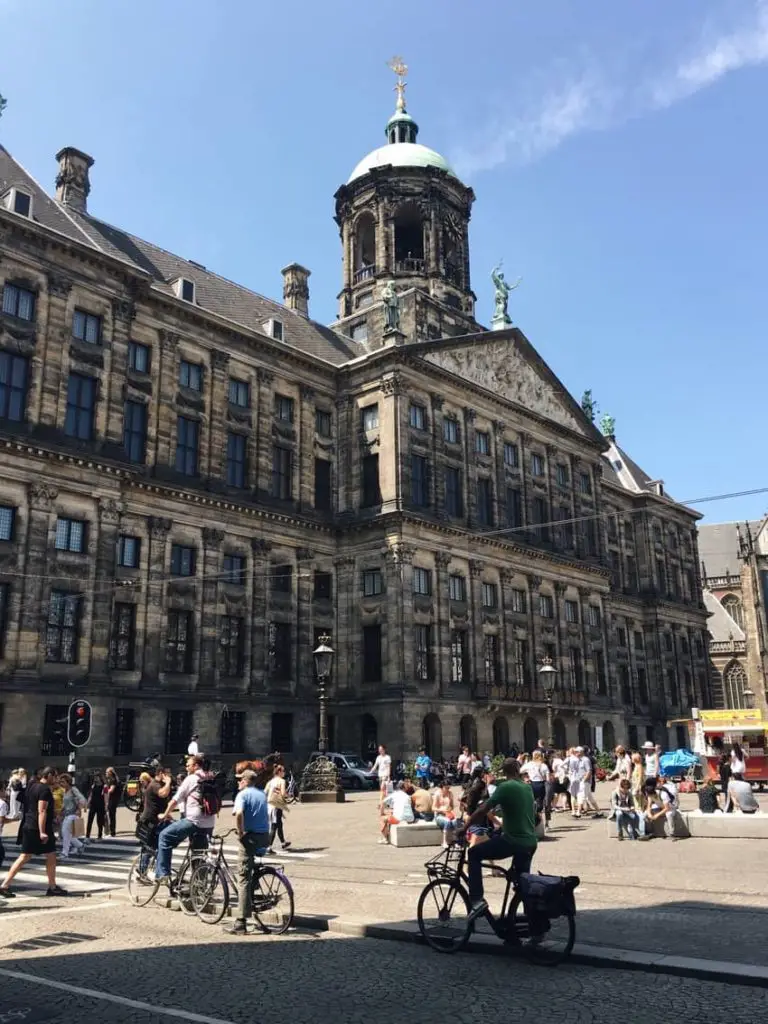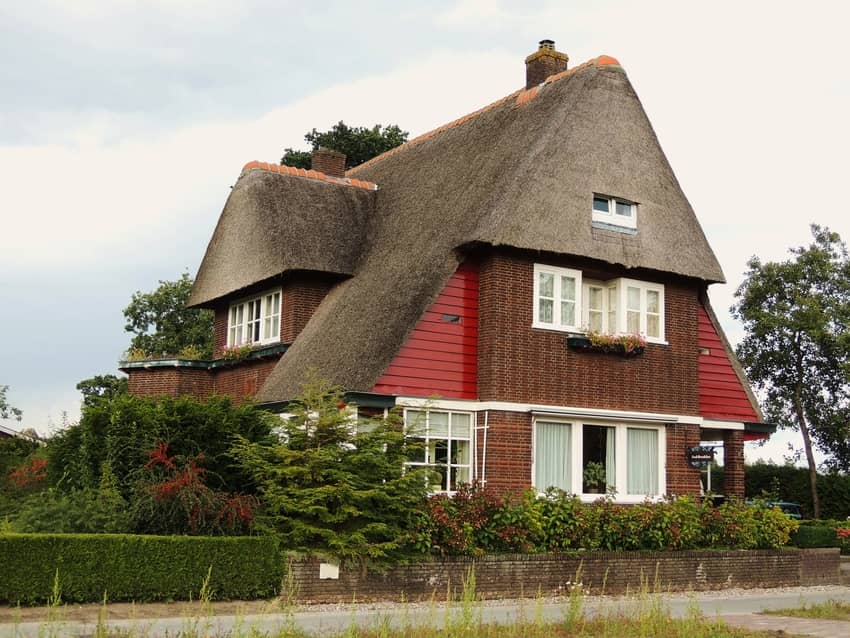Amsterdam is a very emblematic city: the plan of the city has one of the most particular styles in the whole world. With the concentric canals and its narrow building, the capital of the Netherlands is one of the most beautiful cities in the world.
The most emblematic Dutch houses follow the architectural style of the Dutch Golden Ages, a unique and peculiar Dutch interpretation of the Baroque that developed between the 16th and 17th centuries. In certain parts of the city one can find Art Deco and the Amsterdam School of Architecture.

Amsterdam itself is a mix of different styles. One of the characteristics of the city is the fusion of different cultures, backgrounds and religions. This makes the architectural style of Amsterdam very unique. However, Amsterdam’s architecture has been influence by the peculiar circumstances the Netherlands was living during the first constructions, the religion and the social context.
Architectural Style in Amsterdam
I have to highlight the fact that there is not only one predominant architectural style in the city. Amsterdam is a very old city, founded around the 12th century with the first fishing and trading village that found this to be the perfect strategic emplacement to improve the economy. Thanks to these improvements, the city started growing and with this, the constructions have been changing since then until now (if you want to know more about the history of the city, check this article).

Amsterdam’s most characteristic buildings are the narrow canal houses, constructed during the 16th Century with the biggest economic growth, that coincides with the Dutch Golden Ages. This period was of big economic growth for the whole population, which in all different types of artistic expressions means that for once the patrons who would pay for the paintings, buildings and so on, were not only from the nobility of the Church but also trade men who could afford it. This was a very innovative concept that took a while to occur in the rest of Europe were the Nobility and the Church represented the hegemony of art and architecture.
How does this influence the architecture? Well, besides the emblematic churches and palaces in Amsterdam, the rest of the constructions were designed to fulfil the needs of the tradesmen, making a new interpretation of the style predominant in the rest of Europe, Baroque. This means that the most characteristic architectural style in Amsterdam, the narrow canal houses and most buildings in the centre, are Dutch Baroque.
What is the Dutch Baroque?
Considering this peculiar circumstances the whole country was going through, Amsterdam’s Baroque was very different to the Italian Baroque and the rest of Europe. It is characteristic mostly for house constructions and the peculiar plan of the city of Amsterdam: the biggest canals were constructed during this period, Herengracht, Prinsengracht and Keizersgracht. Houses followed a very distinct characteristic: big windows, with hooks, clean facades, narrow structures, and even a leaning forward.
The Dutch Baroque was very different to the European one: NO richness, NO dramatic structures or colours, NO tension, NO exuberance. Instead, the Protestant religion that influenced strongly in the mentality of the whole country after the Reformation, changed also the way buildings were constructed, making them simple, one very similar to the other avoiding making differences, simple lines, simple structures and noble materials.

How would Dutch people express their wellness and religious believes? First of all, there are many churches in Amsterdam, different religions and believes but always present in the society. Second of all, the wellness was express by the location of the houses, making the most impressive and expensive ones the ones closer to the centre and facing the canals, the source of the wellness and richness of the country.
The nobility and the Church were also present. The first one, mostly constructed castles, characteristic of other parts of the Netherlands and not in Amsterdam. The only Palace in Amsterdam, the Royal Palace, was constructed during this period, however, since it was build at the end of the 17th century, it is already a transitional building with some influence of Classicism. It is building that follows a little bit more the European tendency of majestic and impressive buildings, yet keeping the Dutch soberness. In the rear of the building, there is a 6-metre-tall statue of Atlas carrying the world on his shoulders. It symbolises the worldwide extent of 17th-century Dutch commerce and interests, and the wellness of the Netherlands. Other emblematic churches are:
- Oude Kerk: Calvinistic church converted after the Reformation (1578). The construction of the building started in the 12th century and it mostly has characteristics of the Dutch Gothic.
- Nieuwe Kerk: Protestant church located in Dam Square and one of the most Gothic buildings in the city. It was reformed at the end of the 17th century with the influence of the Neo-gothic movement.
- Westerkerk: is one of the examples of Dutch Renaissance, constructed during the beginning of the 17th century.
Other Architectural Movements
Besides the Gothic and Baroque constructions, Amsterdam has been growing and with it there have been many other architectural movements that have influence the currently look of the city, making it even more interesting. Among them we can see:
Amsterdamse School
This architectural style initiated in the 20th Century, mixing elements of Expressionism, Art Deco and Jugendstil. The first architect who initiated this movement was Michel de Kerk , who constructed a housing block called Het Schip (The Ship). Other buildings are the Olympic Stadium, Tuindorp Oostzaan, Het Nieuwe Huis, Het Hoofddorpplein and many others around the city.

Art Deco and Historicism
At the end of the 19th century Amsterdam had another wave of construction and new architectonical movements. The buildings created during this time are part of the identity of nowadays Amsterdam landmark. Among these buildings we can find: Central Station, Central Post Office (the nowadays mall Magna Plaza, behind Dam Square), the Rijksmuseum, the City Theatre “Stadsschouwburg”, the Concertgebouw in Museumplein and the old part of the Stedelijk Museum of Modern Art. All of these buildings have in common the inspiration in historical elements, gothic and renaissance elements such as the castle structure, pointy roofs, and so on.

We have to consider that these buildings have also been modified and have been growing with the city. Some of them such as the Concertgebouw and the Stedelijk Museum have suffered big transformations, some modern parts have been added, changing completely the look of the buildings. This is the characteristic bathtub of the Stedelijk, a Contemporary piece.
Functionalism
The influence of the French movement had an impact in the whole Europe, including Amsterdam. After 1920 the constructions started being design to use new technologies, concrete, prefabricated materials, more standardisation and so on. These was used by many architect in the Netherlands, among them Cornelis van Eesteren and Gerrit Rietveld, the creator of the Van Gogh Museum.

Zevenlandenhuizen
The Zevenlandenhuizen is not an architectural style per se but a must for those interested in architecture who want to explore the city of Amsterdam. This literally means, the houses of the seven countries/lands and represent just that, 7 different houses with 7 different styles that characterise 7 different countries.

Tjeerd Kuipers, was inspired by seven European countries and their characteristic styles of building: Germany, France, Spain, Italy, Russia, the Netherlands and England. These represent the open-mindedness and cosmopolitan elements of the Dutch society at the beginning of the 20th century.
Nowadays these are private residences and are not open to the public, but they are very close to Vondelpark and definitely worth checking from the outside.
Foreign Creations
At the end of the 20th century there were a lot of foreign architects that were commissioned to add some changes into the city of Amsterdam. Each of them with their own style and influenced by their origins. Among these buildings we have the reformation of the Rijksmuseum (Antonio Cruz and Antonio Ortiz ), the construction of the Museum Square (Sven-Ingvar Andersson) and the creation of the marvellous NEMO Science Museum (Renzo Piano) building by the river Ij.
Amazing Architecture in Amsterdam
Even though they don’t belong to a specific style, there are several buildings worth seeing, curious and interesting style that make Amsterdam an even more unique city.
- WoZoCo by MVRDV: modern architecture is more typical of Rotterdam than Amsterdam, but in the South and the suburbia of the city, there are also new constructions: among these, WoZoCo. They are apartments for the Elderly, a 100 living units in an area of Amsterdam that has recently been threatened by the loss of green environments and spaces as a response to large increases in density. Colourful and original.
- Silodam: this building was another experiment created during the 19th century during the boom of population in the city. It was inspired was an experiment in density and inspired in Rotterdam’s modern tendencies.
- Architecture Centre of Amsterdam (ARCAM): lastly, if you are into architecture you should visit the ARCAM, where they will provide you with information, guided tours and architecture guides. It is as well a museum, where they normally host both permanent and temporary exhibitions. The building itself is also worth seeing.
- Others: Sarphatistraat Offices, Muziekgebouw, IJ Tower, EYE film museum, The Rock in Amsterdam Zuid and the whole business district, ING House and many more.